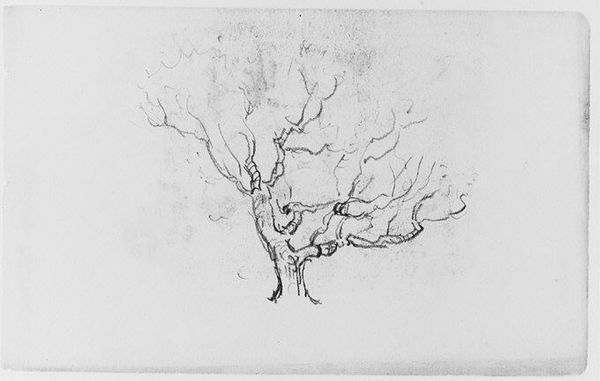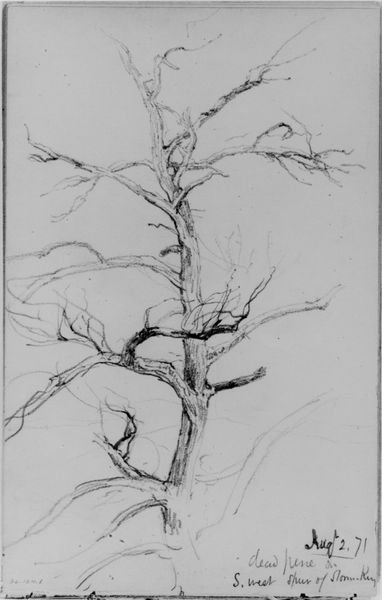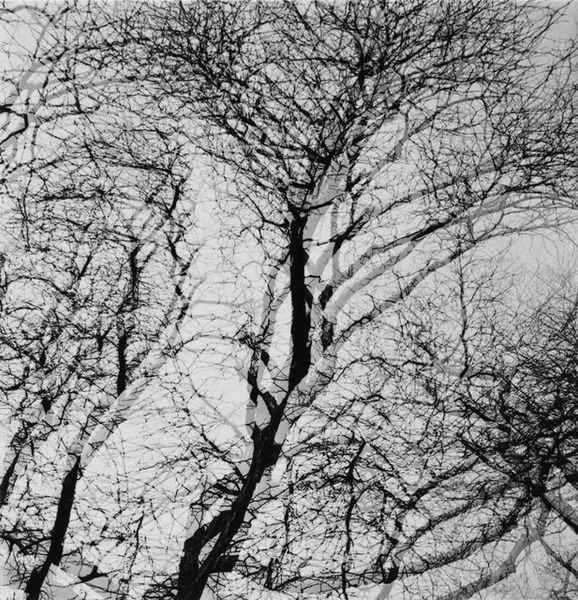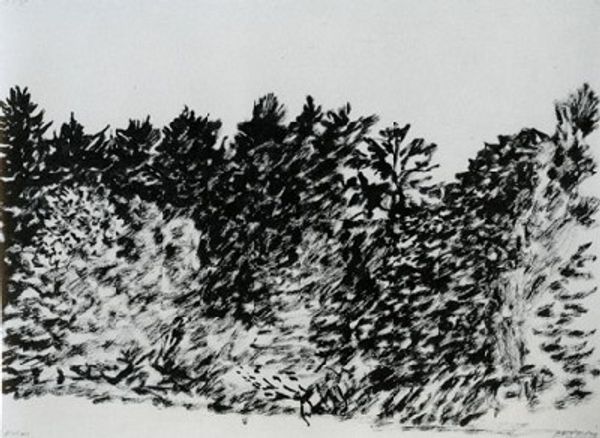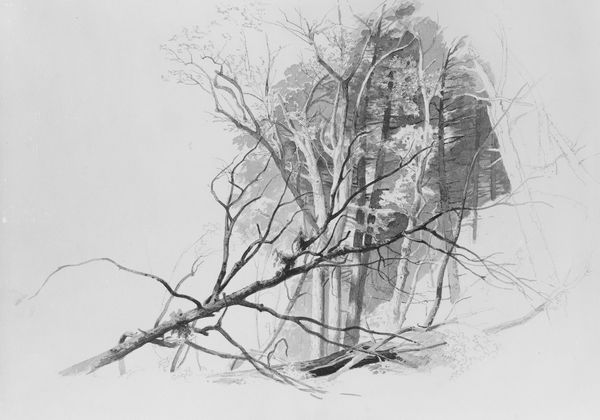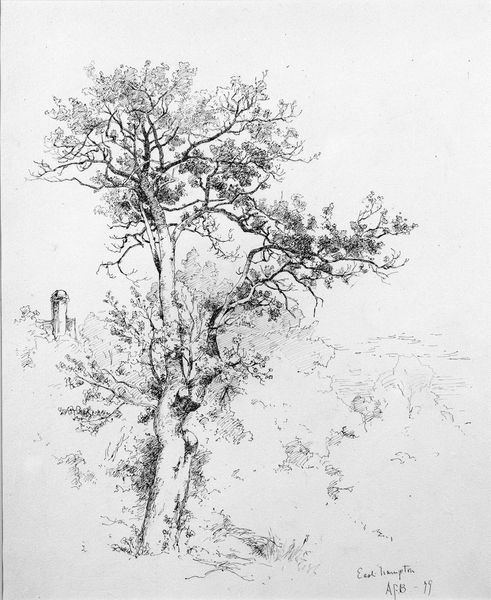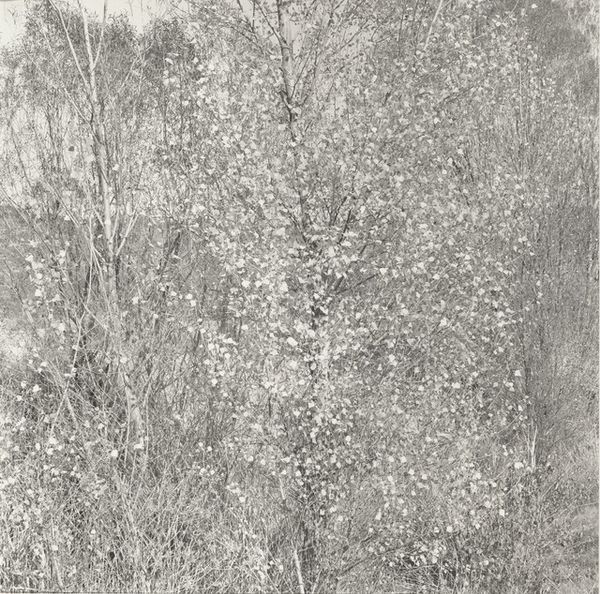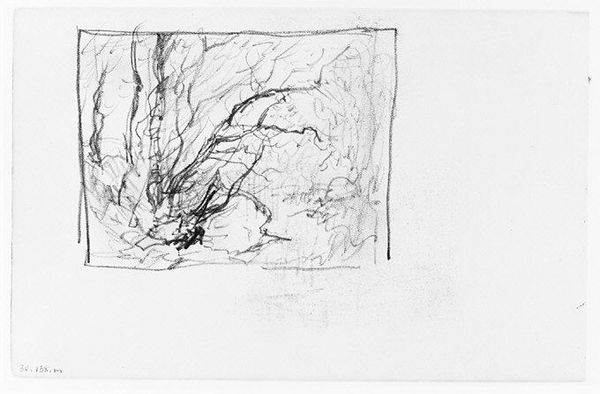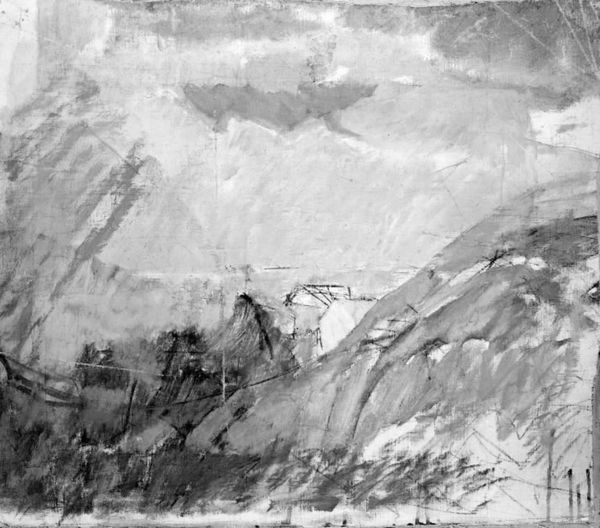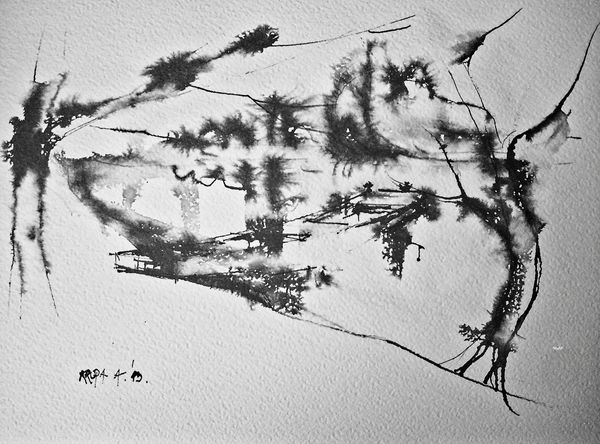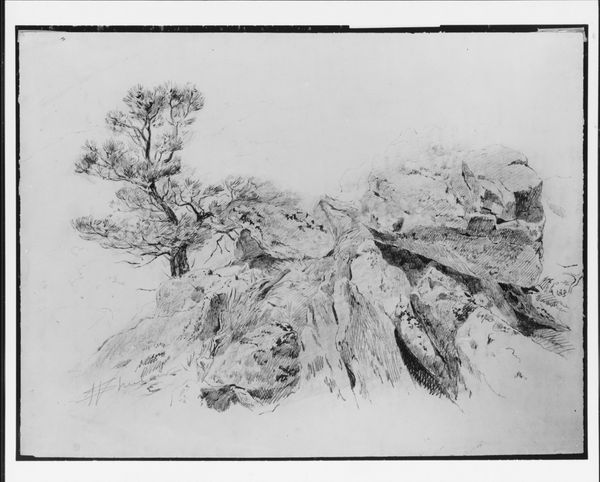
llustration til St. St. Blicher: "Mowns": Titelblad. Busk blomster, bær, et firben 1886
0:00
0:00
drawing, paper, ink
#
pencil drawn
#
drawing
#
landscape
#
paper
#
ink
#
line
#
realism
Dimensions: 333 mm (height) x 280 mm (width) (bladmaal)
Curator: Here we have Hans Smidth’s "Illustration til St. St. Blicher: \"Mowns\": Titelblad. Busk blomster, bær, et firben," created in 1886. It’s a detailed drawing rendered in ink on paper. What strikes you first about it? Editor: The starkness. The simplicity of materials heightens a feeling of something being carefully observed and rendered in the most immediate, direct way possible. Curator: That immediate feel comes through. Notice how the seemingly simple sketch also invites us to reflect on much older visual traditions. The bush and the lizard could represent a sort of earthly paradise. Do you get a sense of an Eden-like motif? Editor: Perhaps, but I'm more drawn to the specific materials and their inherent qualities. The ink itself, where did it come from, how was it manufactured? What paper was available to Smidth at the time? It shifts the perspective from pure symbolism to considering the means of artistic production in late 19th-century Denmark. Curator: That grounded perspective is fascinating. However, I keep coming back to how this scene—flora, fauna, berries—becomes symbolic when framed as an illustration, especially for Blicher's work. There’s an element of transformation, an alchemical symbolism here. Editor: That transformation happens materially too! The artist transforms raw materials like ink and paper, readily available resources, into a detailed illustration through the skilled use of their hands and tools. That act of labor gives it another layer of meaning. Curator: I appreciate how you tie in the physicality and the labour; but let's also think about this artist. We look to understand not just materials, but what he hoped to transmit to Blicher's audience about his vision? Is there something about it meant to resonate over time? Editor: Certainly. But it starts with that paper, that ink, the precise, reproducible act of drawing...those choices dictate how well the image survives. The hand-rendered and materially contingent illustration speaks to the passage of time. Curator: So we have come full circle—thinking about how those surviving materials offer the portal to both understand and reinterpret it again and again. Editor: Precisely! Its very material nature ties it indelibly to its own time.
Comments
No comments
Be the first to comment and join the conversation on the ultimate creative platform.
